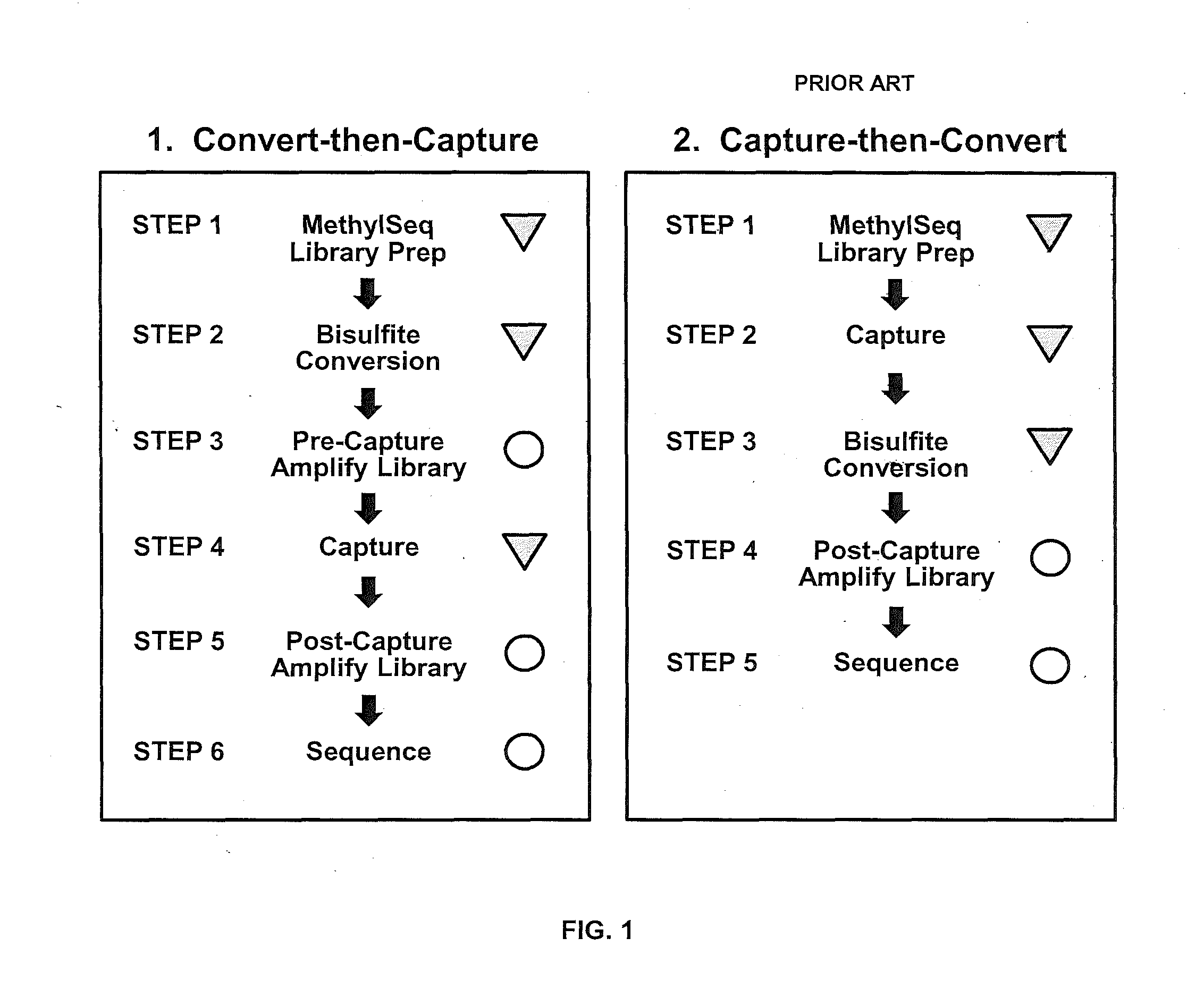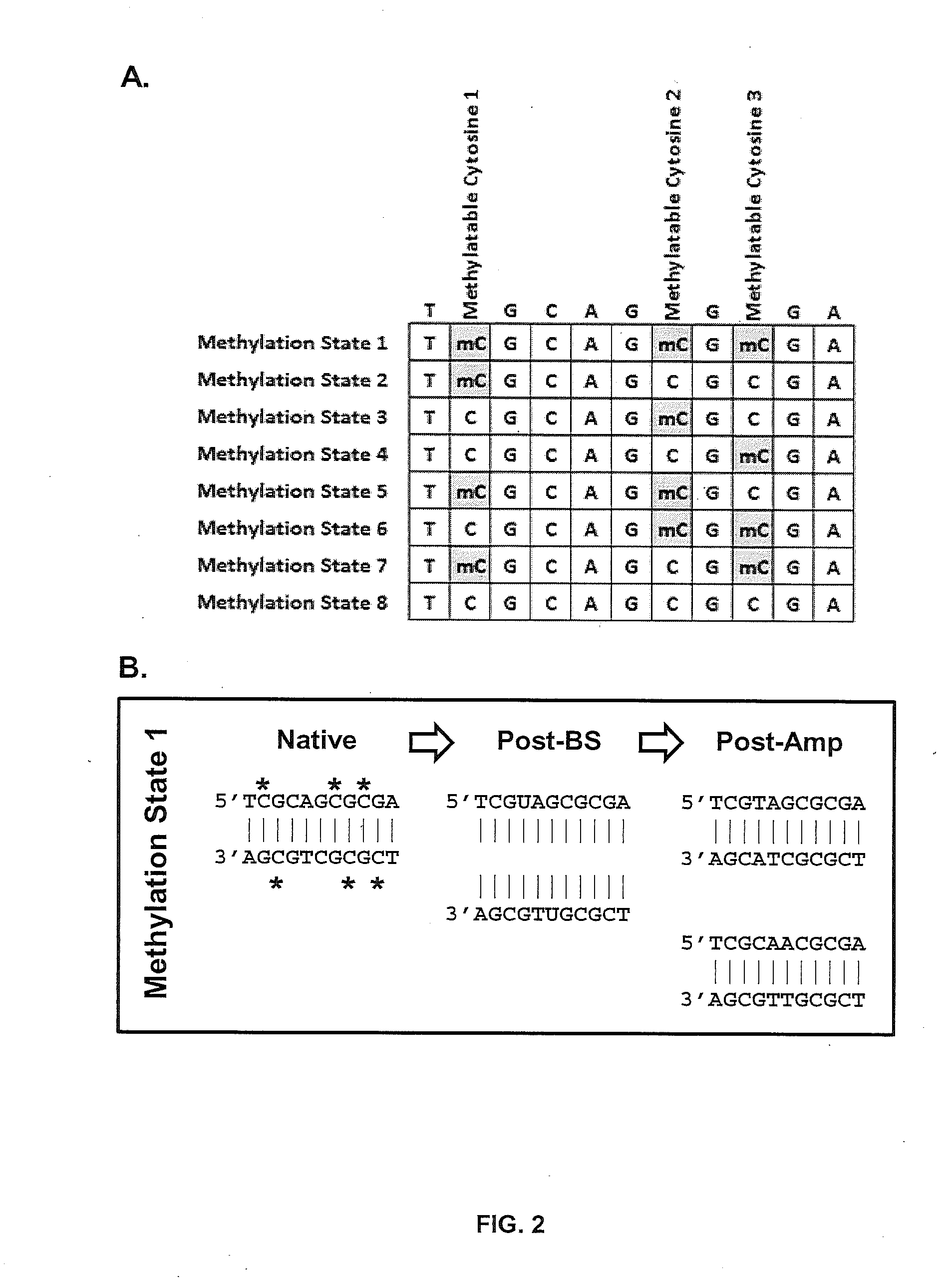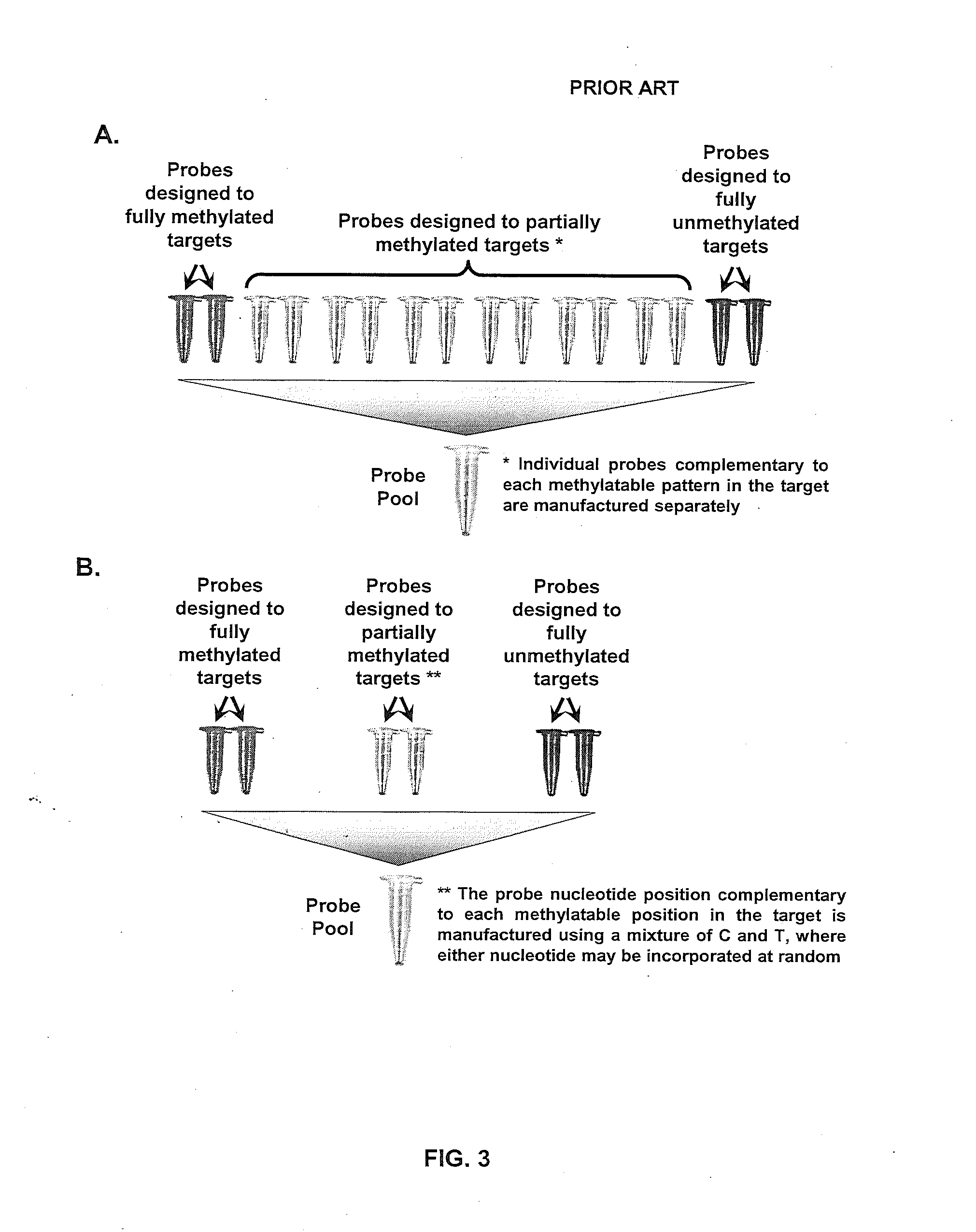Methods of assessing epigenetic regulation of genome function via DNA methylation status and systems and kits therefor
a technology of epigenetic regulation and methylation status, applied in the field of epigenetics, can solve the problems of doubling the size of the genome after amplification, complicating traditional probe and assay design, and affecting the accuracy of epigenetic regulation, so as to improve the sequencing coverage depth, reduce cost and time required, and improve reproducibility.
- Summary
- Abstract
- Description
- Claims
- Application Information
AI Technical Summary
Benefits of technology
Problems solved by technology
Method used
Image
Examples
example 1
Benchmarking Technical Performance of the Convert-then-Capture Concept
[0067]About 0.5 μg to about 1.0 μg of DNA can be used as a starting material. Control nucleic acids used to monitor the efficacy of, for example, BS conversion or the capture process itself can be added at this point. The DNA sample can be fragmented to an average size of about 180 bp to about 220 bp using mechanical shearing methods (e.g., sonication). The fragment ends can be repaired to produce blunt-ended, 5′-phosphorylated fragments using mixtures of polymerases and other enzymes (e.g., DNA Polymerase and Klenow Fragment). dAMP can be added to the 3′-ends of the dsDNA library fragments (i.e., “A-tailing”) to facilitate subsequent ligation of methylated library adapters. Methylated dsDNA library adaptors with 3′-dTMP overhangs can then be ligated to A-tailed library fragments in a reaction that contains ligation buffer, A-tailed DNA, DNA ligase (typically 1 unit), and methylated dsDNA library adaptors with 3′-...
example 2
Applying the Method of the Invention to a Series of Human Cell Lines
[0086]The method as described in Example 1 was applied to DNA isolated from several human cell lines. A 3.2 Mbp capture design was built to regions of interest in human genome hg19. The regions interest included 500 gene promoters across a range of methylation occupancy predicted via roadmap MethylC Seq from cell line IMR90 (normal human lung fibroblast). FIG. 4 shows performance of the capture assay. The assay captured 431 predicted bivalent domains and identified 4 large contiguous imprinted regions in genes CDKN2A, H19-IGF2, XIST and a region on the Y-chromosome.
example 3
Comparing Methylation Patterns in Three Human Cell Lines
[0087]FIG. 5 shows data on identification of methylated sequences in three human cell lines IMR90 (fibroblast), NA04671 (Burkitt's lymphoma) and NA12762 (normal B-lymphocyte). The DNA samples and mixtures thereof where analyzed essentially as described in Example 1. The data shows nearly ideal performance (822-fold enrichment vs. 972-fold maximum possible); low minimum acceptable input (750 ug) of genomic DNA; low duplicate read rate (83% coverage of the target space at >10× read depth with only 2.6 M reads. The results indicate 2.5× coverage compared to published data on IMR90 (Lister et al. (2009) Nature 462:315-322). The method further revealed regions hypermethylated and hypomethylated in cancer as compared to the normal cell (data not shown). FIG. 6 shows high reproducibility of data obtained from separate samples from the same source (NA04671).
PUM
| Property | Measurement | Unit |
|---|---|---|
| Fraction | aaaaa | aaaaa |
| Fraction | aaaaa | aaaaa |
| Length | aaaaa | aaaaa |
Abstract
Description
Claims
Application Information
 Login to View More
Login to View More - R&D
- Intellectual Property
- Life Sciences
- Materials
- Tech Scout
- Unparalleled Data Quality
- Higher Quality Content
- 60% Fewer Hallucinations
Browse by: Latest US Patents, China's latest patents, Technical Efficacy Thesaurus, Application Domain, Technology Topic, Popular Technical Reports.
© 2025 PatSnap. All rights reserved.Legal|Privacy policy|Modern Slavery Act Transparency Statement|Sitemap|About US| Contact US: help@patsnap.com



